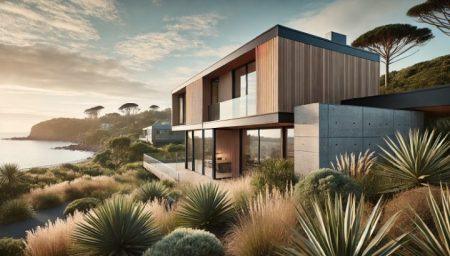Livonia’s tree service professionals offer expert solutions to transform your landscape. With their specialized knowledge and skills, they can enhance the beauty and health of your outdoor spaces. These experts provide a range of services tailored to your specific needs.
Experienced arborists can revitalize your property through strategic pruning, tree removal, and planting. Their techniques promote healthy growth while improving the overall appearance of your landscape. From shaping ornamental trees to managing large shade trees, these professionals have the tools and expertise to handle any job.
Professional tree services also address safety concerns and prevent potential property damage. Regular maintenance by skilled technicians can identify and mitigate risks associated with diseased or structurally unsound trees. By partnering with Livonia’s tree service professionals, you can create a stunning and secure outdoor environment for years to come.
Designing Your Landscape
A well-designed landscape enhances your property’s beauty and functionality. Thoughtful planning creates outdoor spaces that reflect your style and meet your needs.
Conceptualizing Your Space
Begin by assessing your property’s layout and existing features. Consider sunlight patterns, drainage, and views from inside your home. Identify areas for relaxation, entertainment, or gardening.
Sketch a basic design incorporating desired elements like trees, shrubs, and hardscaping. Factor in maintenance requirements and budget constraints. Professional landscape designers can offer expert guidance and creative solutions.
Choosing Features for Curb Appeal
Select plants that thrive in your local climate and soil conditions. Incorporate a mix of evergreen and deciduous trees for year-round interest. Add colorful flowers and ornamental grasses for visual appeal.
Install lighting to highlight key features and improve safety. Consider a water feature like a fountain or pond to create a focal point. Well-placed outdoor art or sculptures can add personality to your landscape.
Integrating Walkways and Patios
Create functional outdoor living spaces with strategically placed patios and walkways. Choose materials that complement your home’s architecture, such as brick, stone, or concrete pavers.
Design walkways to connect different areas of your landscape seamlessly. Ensure paths are wide enough for comfortable passage and proper drainage. Incorporate curves for visual interest and to guide visitors through your garden.
For patios, consider size and location based on intended use. A dining area near the kitchen or a secluded reading nook can enhance outdoor enjoyment. Add pergolas or shade structures for comfort during sunny days.
Constructing With Care
Careful construction is essential for creating lasting, functional landscape features. Proper techniques and material selection ensure retaining walls and plantings thrive long-term.
Building Retaining Walls
Retaining walls provide both aesthetic and practical benefits to landscapes. They create level areas on sloped terrain and prevent soil erosion. Proper construction starts with a solid foundation. Excavate the base area and add a layer of gravel for drainage.
Choose materials suited to the wall’s height and load requirements. Options include interlocking concrete blocks, natural stone, timber, and poured concrete. For walls over 4 feet tall, consult an engineer to ensure structural integrity.
Install a perforated drain pipe behind the wall to divert water. Backfill with gravel to promote drainage. Slope the wall slightly backward for stability. Cap the top layer to complete the wall.
Selecting Materials and Plants
Choose hardscape materials that complement your home’s architecture and existing landscape. Consider durability, maintenance needs, and local climate when selecting pavers, stones, or wood for structures.
For plantings, evaluate sun exposure, soil type, and moisture levels in each area. Select native species adapted to local conditions for easier care and better survival rates. Group plants with similar water and light needs together.
Plan for mature plant sizes to avoid overcrowding. Incorporate a mix of evergreens and deciduous plants for year-round interest. Add mulch around new plantings to retain moisture and suppress weeds.







